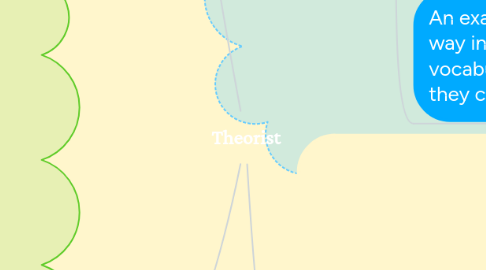
1. Vygotsky's:
1.1. who is he? Vygotsky's is a Russian psychologists who is best known for his sociocultural theory. Vygotsky believes that social interactions plays a huge role children's learning process. Because of social interactions children go through a process of learning.
1.2. Vygotsky's sociocultural hypothesis:
1.2.1. learning precedes development
1.2.2. language is the main tool of thought for students when it comes to thinking.
1.2.3. meditation is a central concept of learning. Mediation can help students strengthen their self regulation as well as focusing on class work.
1.2.4. Social interaction is the basis of learning and development. Internalization is a process that transforms learning from the social to the cognitive plane.
1.2.5. Zone of Proximal development is the primary activity space in which learning takes places in.
1.3. Tenets of socialcultural theory
1.3.1. Tenets of sociocultural theory is a learning precdes development. The zone of Promixmal Development is the primary activity space in which learning takes place.
1.4. Elements: Syntax it is the study of sentences and phrases or the order that people put words in the right order. It creates meaningful communication it is the order of the sentence. For example: Samantha walked her cat, versus the cat walked Samantha.
2. Krashen
2.1. He is a specialist in language development and acquisition, and his influential theory is widely accepted in the language learning community.
2.2. Second Language Acquisition Theory: - Seeks to quantify how and by what processes individuals acquire a second language.
2.3. Krashen's Hypotheses:
2.3.1. 1. Learning versus acquisition: Humans are genetically programmed (LAD) to acquire languages; explicit instruction may impede natural language learning
2.3.2. 2. The language monitor: Overemphasizes rules and consciousness over production
2.3.3. 3. Comprehensible input + 1: Messages must be delivered in ways that are understood by the learner and that are slightly above his or her current proficiency level
2.3.4. 4. The affective filter: The learner must feel comfortable enough to take risks in the language learning situation
2.3.5. 5. The affective filter: Language acquisition follows a natural sequence, from simple to more comples language
2.4. An example way to use this theory or his way in the classroom would be: A vocabulary list of set grammar, this way they can practice and memorize things.
3. James Cummins
3.1. Who is he? a professor at the Ontario Institute for Studies in Education of the University of Toronto where he works on language development and literacy development of learners of English as an additional language.
3.2. Cummins Contextual Interaction Theory
3.3. His five principles:
3.3.1. Cummins’ fifth principle refers to issues of status, not only of the language of immigrant students, but status as embedded in the daily interactions between teachers and students, and between students and students.
3.3.1.1. Principle 1: For bilingual students the degree to which proficiencies in both the L1 and L2 are developed is positively associated with academic achievement.
3.3.1.2. Principle 2: Language proficiency is the ability to use language for both academic purposes and basic communicative tasks.
3.3.1.3. Principle 3: For language minority students the development of the primary language skills necessary to complete academic tasks forms the basis of similar proficiency in English.
3.3.1.4. Principle 4: Acquisition of basic communicative competency in a second language is a function of comprehensible second language input and a supportive affective environment.
3.3.1.5. Principle 5: The perceived status of students affects the interactions between teachers and students and among the students themselves. In turn, student outcomes are affected.

